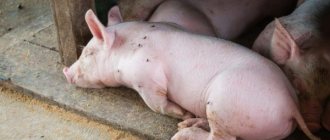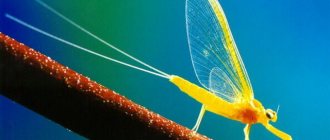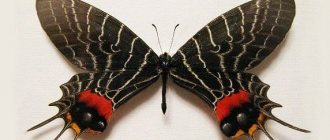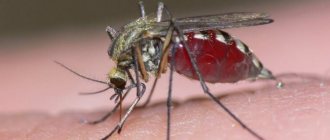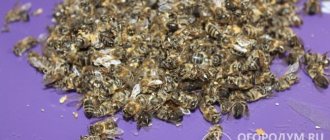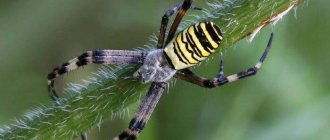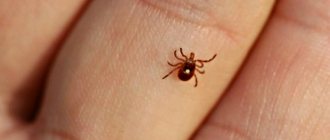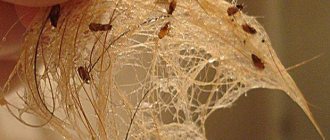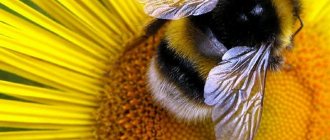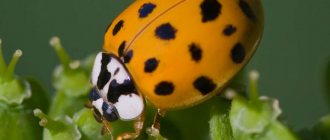Insects surround us everywhere. In human understanding, the life cycle of representatives of this class is negligible - it is weeks, months, rarely several years. But there are real long-livers.
It is quite difficult to say exactly how long a particular type of insect lives, since environmental conditions (temperature, humidity, access to food) significantly influence life expectancy. However, as a result of long-term observations and research, entomologists still managed to find out which insects can be classified as the longest-living.
The development of any insect is a successive change of several stages. A feature of some species is the delay on one of them, due to which life expectancy can increase several times. Vivid examples are borer beetles, mites, and cicadas. And ordinary domestic cockroaches have such a developed instinct for opportunism that if one generation manages to live in nourishing and chemically safe places, then the next generation will live longer, and so on.
Ticks
Like any other type of insect, mites go through 4 stages of maturation from egg to adult. But how long each period will last depends solely on external circumstances. Ticks are designed in such a way that in order to move to a new stage of maturation, they must eat a certain amount of food (suck on the blood of any warm-blooded animal). If the larva or nymph does not find a source of food, it does not move to the next stage of development and can linger on the previous one for up to 2 years. They are able to overwinter if the temperature does not drop below +5 °C. Having reached maturity, the female will die as soon as she lays eggs, the male will die after he has fertilized several females. Adults can also live for several years without food, and minor frosts are no longer a problem for them: they hibernate. Thus, ticks are quite capable of living up to 5-6 years.
Other Khrushchi
For what reasons these creatures were dubbed Khrushchev, it is not known with certainty, because this probably happened a long time ago. Perhaps this is because in the spring, waking up after a long sleep and trying to satisfy their hunger, these beetles attack young foliage with such greed that a sensitive ear can catch their chomping crunch.
Also, especially earlier, when there were no effective means of combating these gluttons, and cockchafers were breeding too actively, at times they were lying on the ground literally everywhere. When they fell under people's feet and were crushed, their bodies crunched loudly.
It is the gluttony and fertility of such creatures that makes them so dangerous in gardens and vegetable gardens. And most importantly, it is not easy to fight them. Under a thick layer of soil, the larvae cannot be detected. And if you start digging, the roots of the plants will be damaged.
But the abundant use of chemicals and the treatment of trees with various preparations is not always desirable. Then it turns out that people suffer from such a struggle more than the beetles themselves, like all of nature, including the plants themselves.
But most of all, pests breed in abandoned areas of land, where they remain untouched and feel at ease. A solution to the problem has not yet been found, but you need to know your enemies by sight. Therefore, next we will get acquainted with other types of Khrushchev, which, by the way, are also very harmful.
May beetle larvae can cause severe damage to any plantings
March Khrushchev (Melolontha afflicta)
When nature blooms after winter, the real life of adult beetles begins. Of course, in areas with our usual climate this happens in May. However, in warmer areas, this can happen in April or even earlier. In this regard, the question arises: what types of cockchafers really are such, that is, appear in May?
It turns out that this is not all. And our following heroes are clear proof of this. They are considered full members of the May beetle genus. But at the same time everyone calls them March Khrushchev. And this is understandable, because they are found in Uzbekistan. And in accordance with the climate characteristics of this area, they awaken to life in March.
The bodies of representatives of this species are not too elongated (about 2 cm long), but quite wide and rounded. Like their northern relatives, March Khrushchevs mostly rest during the day and fly in the morning and evening, or even at night.
Often in the dark they rush towards the light of indoor lamps and lanterns, revealing themselves and becoming too noticeable. Sometimes they cover up to two tens of kilometers in a day. And they manage to spoil a lot of plants. Well, well, they need to hurry up to live, because the life of beetles is short-lived. The period allotted to them by nature is no more than a month or 40 days.
June beetle (Amphimallon solstitiale)
This is also a pest, but not too dangerous for shrubs and grasses, since it specializes more in trees, especially conifers. Therefore, it can be rarely found in gardens. Moreover, loose soils do not attract such beetles; hard soils are quite suitable for them. Yes, and they are not so widespread, and in terms of fertility there is not much scope.
The June beetle can be distinguished from the famous May pest primarily by its modest size. Even the largest specimens do not grow up to 1.8 cm in length. Moreover, the larvae of June beetles are one and a half times smaller.
However, they lag behind the May ones in literally everything:
- their lifespan is much shorter - no more than two years, and sometimes 10 months;
- the color tones are not so rich and bright;
- their flight begins later (as can be understood from the name), this is not related to the climate, this is just the way these insects have characteristics.
Such beetles are found almost throughout Europe, including across vast territories of Russia, including the Asian part of the country.
The June Khrushchev differs from the May one in its small size and faded color.
July beetle (Polyphylla fullo)
Like the previous species, which threatens coniferous forests, this one has become famous in Germany, since its larvae are very harmful to cereal crops. But here such beetles behave more quietly. First of all, because they live only in the western regions of the country, spreading to the Caspian Sea. But mostly they play pranks in Central and Eastern Europe outside our borders.
Of course, July beetles would do more harm, but they do not reproduce too quickly. Their flight begins closer to July. Adult beetles are large, sometimes growing up to 4 cm in length. They feed on pine needles, leaves of acacias, birches and other trees. They are often called marbled or variegated beetles for their corresponding spotted color. The development and growth of their larvae occurs over a long period, on average three to four years.
Marble July Khrushchev
Garden beetle (Phyllopertha horticola)
It is better to remember these beetles well, because they are very malicious pests that eat the leaves of various vegetable crops and cereals. While their larvae destroy the roots of these plants with great zeal. These creatures have the appearance of a cockchafer , although they are two or even three times smaller in size.
But their life cycles converge in many ways. The flight of these beetles also begins in May and lasts about two months. Their color is beautiful and shiny. The anterior part and pygidium are greenish. The hard wings are brown or brown, often with a yellowish tint, sometimes with a reddish tint. The body itself is dark and shaggy. Such beetles are widespread over a vast territory of Europe, from its central regions to Siberia itself. They are also found in Mongolia.
Flowerworts (Hopliini)
These creatures are classified by entomologists as belonging to the Khrushchev subfamily, which means they can rightfully be called Khrushchi, despite the fact that their size in comparison with their older relatives is simply microscopic. In total, there are about eight hundred species of such insects. The smallest representatives are about 5 mm long, and the largest are no more than one and a half centimeters.
Such beetles live not only in Eurasia, but also on other continents, for example, Africa and America. As befits beetles, at the beginning of their life in the guise of earthworms they eat the roots of plants. And turning into full-fledged beetles, they feast on the green parts of the flora. Some small varieties are even grown in indoor plants.
flies
The process of growing a fly takes 10 days (less in hot climates). An adult housefly lives on average 15-25 days, a fruit fly - about 10 days, a blowfly - one week. But there are many circumstances in which these indicators can differ significantly from the average. This species survives at temperatures from + 10 to + 40°C. The optimum is considered to be +20…+25°С. At higher or lower rates, the cycle duration is reduced. However, if with the onset of cold weather the fly manages to successfully hide, then it will hibernate, overwinter and wake up safely next spring, which extends its existence to 6 months. Flies living in an apartment can reach one year of age without any problems.
Nutrition
The Hercules beetle, despite its harsh appearance, is a herbivorous insect. Of all the things the beetle eats, tropical, rotten and fermented fruits can be distinguished.
The insects' mouthparts are underdeveloped, literally sucking out the sweet juice from the fruit until only the peel remains.
The search for the fetus is carried out using the antennae, the organ of smell and touch. Basically, beetles wander under trees in search of suitable food.
An insect can feed on one fruit for several days.
The Hercules beetle doesn't care about tree sap. Insects are carried by paws into cracks in the bark and attached to the trunk. Beetles can fly from tree to tree.
Fleas
Parasites, which, according to the vast majority of people, live in animal fur, live on average three months. This is under ideal external conditions. In fact, fleas do not live in animal fur. They use them exclusively for food, i.e. they jump on the wool, get to the skin, where blood vessels pass close, eat and return to their natural (favorable) living conditions - cracks, baseboards, carpets, etc.
At elevated temperatures, the life cycle of parasites accelerates and passes in 3 weeks; with a significant decrease, on the contrary, it slows down and extends.
But among this group of insects there are real long-livers. For example, Tien Shan fleas live up to 1 year (they have an impressive size - up to 7 mm), and fleas living in the northern regions live up to 1.5 years (they are able to hibernate and overwinter in a state of suspended animation).
Genus May beetles
All varieties of May beetles belong to the Khrushchev subfamily, which consists of almost 6 thousand species of a wide variety of beetles. All of them have plate-like fan-shaped antennae, as well as two pairs of folding wings: fragile lower ones, allowing them to fly; as well as hard upper ones that protect them.
The type of breathing of the cockchafer is , in principle, common for insects. They do not have lungs, but they do have tracheas - a complex, intricate, branching network of 18 tubes, through the external openings of which, located on the chest and abdomen, air penetrates into the body, nourishing all tissues.
But the important thing is that before flying, before opening its wings, the beetle breathes especially hard to fill itself with air, as if it were a balloon. Otherwise, it is unlikely that this clumsy insect could soar into the skies, especially to a height of up to 100 m.
And why are these creatures not the subject of careful study and scientific debate? Scientists have long dreamed of revealing their secret in order to invent an economical and maneuverable design for air travel. And now, having briefly become acquainted with these creatures, let’s move on to a description of the species that each of us can encounter, because they live with us on the same continent of Eurasia.
Despite the small size of its wings, the cockchafer flies well
Western chafer (Melolontha melolontha)
This variety is found in central Europe. The habitat of such insects also covers part of the Russian western territories. The size of representatives of the species is about 3 cm, sometimes a little less.
Their dark, shaggy body is oval and convex in shape, protected on top by brown, sometimes reddish or yellowish elytra, on which longitudinal ribbed projections and short but dense growth can be seen. The head does not stand out too much from the body; it is small and grown into the chest.
This anterior region is predominantly dark in color, like the scutellum, dotted with yellow-gray hairs, especially long and noticeable from the sides. At the back there is a brown pygidium (rear) elongated in a triangle with a process at the end in males.
The male half can also be distinguished from the females by their larger antennae, which have seven large segments. The legs of beetles can be brown, reddish, yellow, or gray. However, there are enough color options, and they are varied.
Feeding on the foliage of young trees, in particular their favorite oaks and plums, such creatures are able to gnaw them to the ground, which causes considerable damage to forests and gardens, especially during periods of their massive flight, which usually happens once every four years. They destroy literally everything, including flowers, buds, herbs, and seedlings.
But nature works in such a way that there are no absolute pests. Any living creature must have some benefit. And she is. These beetles and voracious fatty furrows feed on many organisms, including animals and birds. And without these creatures, someone would have nothing to eat.
What about people? Surprisingly, some of us are willing to pay for the larvae of these obnoxious insects or dig through manure for them. First of all, fishermen need them for bait. In addition, there are those who prepare delicacies not only from larvae, but also from adult beetles. And these dishes are not at all harmful, they are even healthy.
After all, this product contains a fair amount of nutritious protein, and also valuable zinc and calcium. Some claim that the beetles taste like lard. Moreover, in some places in France and Germany soup has long been prepared from them. And lovers of this dish claim that it seems to be made from crayfish or lobster.
An invasion of cockchafers can destroy entire forest stands
Eastern chafer (Melolontha hippocastani)
This species is notorious in Russia as a malicious destroyer of pine forests, but also, no less, of oak and birch forests. It is distributed from the north-west of the country to Altai, and in the east to Siberia and Yakutia. It is also found in Europe from north to south to the Danube; as well as in Asia, in particular Mongolia, Tibet and China.
Purely externally, if you don’t go into subtleties, such beetles are in many ways similar to representatives of the western variety. However, in order to determine which species the cockchafer belongs to, you need to remember the following distinctive details of the eastern beetle:
- slightly smaller sizes;
- a lighter anterior upper part, including a hairy head, pronotum and scutellum dotted with dotted spots, which usually have a brownish tint;
- shortened pygidium;
- dark edging of hard wings.
However, due to the diversity and variability of colors, not all of these signs may appear clearly enough. Often the colors of such insects depend not even on species characteristics, but on environmental ones. For example, it was noticed that in individuals living in the shade of a dense forest, the front of the back and legs are predominantly darker.
While beetles that spend their days in open spaces, the same parts of the body are filled with reddish hues. One can also note some distinctive features of beetles within the species:
- The Italian subspecies (Melolontha hippocastani romana) is famous for its very hairy anterior region;
- The Mongolian subspecies (Melolontha hippocastani mongolica) is stockier and smaller, with a shortened body and thickened rear.
As for taste preferences, there is complete unity here, because these beetles can be called omnivorous, but it would still be more accurate to say polyphagous. They and their larvae happily attack almost any species and form of flora, including willow, wild chestnut, poplar, aspen, larch, hazel, currants, and strawberries.
But there are still plants that are undesirable for such insects. These are cabbage, beans, radishes, radishes, sweet clover, clover. If you breed them in the garden, you can slow down the spread of harmful beetles.
Transcaucasian chafer (Melolontha pectoralis)
Representatives of this species prefer to settle in places where there are many trees. Often found in the Caucasus, but also in the south and center of Europe. In color and some other characteristics they are similar to previously described species. The larvae are especially indistinguishable. As for the beetles, they are broad-bodied, stocky, but not too large.
They have a dark front part, including the head and pronotum. The ribbed elytra are most often brown in color, but in different shades: reddish, brownish or almost black. The dark pygidium is of an unusual shape. It is quite large, having the outline of a pronounced triangle, but with a short process, predominantly developed in males.
The life of these insects, like their relatives, begins underground at a depth of no more than a quarter of a meter. There, mother beetles leave dirty white oval eggs in small piles - tiny capsules in which the lives of future beetles are hidden.
But they themselves immediately find their death here underground, while with males this happens even earlier. Adult Khrushchevs left offspring, having fulfilled their destiny. Therefore, they are no longer useless for nature and their own species.
Since the development of larvae occurs over years and under rather specific conditions, it is almost impossible to raise them artificially. In their natural environment, they are very sensitive to humidity. The lack of it forces them to go deeper underground, where they move easily thanks to their worm-like shape.
The ugly larvae look completely different from the adult beetles. They don't have eyes, but they do have legs. They make their way through the soil, breaking passages with their jaws. There is a hypothesis that cockchafers originated from worms. In this case, they probably learned to fly much later than they learned to dig.
Modern species, like many insects (for example, butterflies), undergo development with complete transformation during their lives, becoming completely different organisms in adulthood. This arouses interest in them, filling their lives with an aura of mystery. Moreover, as a part of nature, they are irreplaceable.
May beetle larvae are large and voracious
Bees
A bee colony consists of a queen, workers and drones. Each species has a different lifespan. So, the uterus lives on average 3-5 years. Perhaps she could live longer, but at the age of 5 her egg-laying function begins to decline, and the bees find a new queen and simply stop feeding the old one (she dies within 2 days). Drones live for about 2-3 months. The age of a worker bee, according to entomologists, directly depends on the time of birth: if it was born in the spring, it will live about 40 days, if in the summer - about 30, but if a bee was born before winter, then it will be a long-liver and will live at least 200 days.
Habitat and lifestyle
The exotic Hercules beetle lives in the tropics and subtropics, where there is high humidity and an abundance of food. Insects live in the countries of Central and Latin America, on the islands of the Caribbean Sea.
The Hercules beetle is capable of lifting and carrying over a distance a weight that is 850 times its own. This makes him a record holder in the insect world.
Hercules are predominantly nocturnal inhabitants. During the day they sit under the top layer of fallen leaves, and at night they come out in search of food. They appear to be very warlike and aggressive towards their relatives.
Males located in the same territory fight for prey, for the right to own a female. With both horns, like pincers, the beetle grabs the body of the enemy, trying to break the elytra. Usually one of the duelists dies.
In some countries, people take advantage of the beetles' arrogance by staging illegal fights between Hercules and other arthropods: lobsters, scorpions, rhinoceros beetles. More often than not, the strong hero wins.
Cockroaches
This type of insect is distinguished by the highest adaptive qualities, which are inherited. Thus, the life expectancy of new generations is constantly increasing. The more favorable the living conditions, the longer the cockroach will live, and vice versa. Temperature and humidity are important conditions for the maturation of individuals. For example, at a temperature of +22 °C, the Prussian dog will reach sexual maturity in six months, and at +30 °C - in just two months.
From the moment of maturation, the red cockroach lives from 7 to 9 months, the black one - about 2 years. At the same time, there is a lot of evidence that cockroaches are increasingly living up to 4 years of age.
"Domestic" butterflies
Natural enemies also prevent the beautiful insect from living longer.
Therefore, in artificial conditions, butterflies live longer due to the disappearance of danger. If desired, you can increase the butterfly's lifespan . To do this, it is necessary to create conditions for the insect that are as close as possible to the natural conditions experienced by an adult. You will need:
- warm, and for some tropical species the temperature will have to be maintained at least 28 degrees;
- sufficient lighting;
- nutrition.
Placing plants in an apartment so that butterflies feed on nectar, as in nature, is quite problematic. But you can replace your usual diet with honey water .
If all conditions are met, the butterfly will bring pleasant moments. She will leave descendants in gratitude for the care, who generation after generation will live, fluttering around the apartment and leaving a feeling of summer and joy.
Greenland shark, 300 years old
Like the bowhead whale, the bowhead shark leads a very measured lifestyle in the icy waters of the North Atlantic, has no natural enemies and, according to some data, can live to be 300 years old. It is noteworthy that puberty in this fish occurs at the age of about 150 years and even later.
♥ ON THE TOPIC: Animals and insects, or 30 reasons not to go to Australia.
How long can they live without bleeding?
Male mosquitoes spend their entire lives without blood from humans or anyone else. Plant food is enough for them to live a normal life. Females need fresh blood or the proteins and nutrients it contains to reproduce.
A female mosquito can survive without blood and even lay eggs, but there will be few of them, not all eggs will hatch into larvae, and those that hatch will be weak and most likely will not survive. A female that lays eggs without drinking blood will die from exhaustion within 1–2 days after laying.
If the food source is close, female mosquitoes feed regularly, replenishing their energy reserves, lay eggs every 2-3 days and we can say that they live happily ever after.
Drunk mosquito with blood
Does a mosquito die after biting a person?
Since male mosquitoes do not bite people, the fact of being bitten cannot in any way affect their existence. As for female mosquitoes, they can bite the victim repeatedly, this will not affect their health in any way.
Unlike, for example, a bee that stings a person, leaves the sting with part of its body in the skin and dies for this, a mosquito easily pierces the skin and easily removes the trunk, without injuring itself at all.
The only thing that can affect the lifespan of mosquitoes that attack humans is the speed and agility of the victim. A good reaction from a potential victim will help kill an insect that is about to start eating or is already sucking blood.
Flamingo, 83 years old
The usual life expectancy for pink flamingos (Phoenicopterus roseus) is about 30-40 years, but in 2014, a bird named Greater died in one of the Australian zoos, which by that time was 83 years old. Thus, the flamingo doubled the age considered by scientists to be the maximum for this species.
♥ ON TOPIC: What will happen to planet Earth if the Moon is destroyed.
Chimpanzee, 75 years old
The closest relative, according to modern ideas, of Homo sapiens, whose genome differs from ours by only 6.4%. However, the primate is not able to reach the maximum human age level - the maximum life expectancy of chimpanzees is considered to be 75 years (the average life expectancy is about 40 years).
♥ ON TOPIC: Old child: “progeria” is a disease that leads to premature aging.
Tardigrade, 200 years old
This miniature animal, about a millimeter long, is considered by most researchers to belong to the order of arthropods, although this classification raises some doubts. The average lifespan of tardigrades is about 200 years, but they attract increased interest due to their other abilities.
The fact is that a miniature organism is capable of continuing to function in conditions that are lethal to the vast majority of other creatures. During various experiments on Earth and in space, tardigrades were cooled in liquid oxygen to -193 degrees Celsius for 20 months and in liquid helium to -271 degrees for 8 hours, boiled at +100 degrees for an hour, poisoned with hydrogen sulfide and carbon dioxide, were irradiated with ultraviolet light and radiation, the dose of which was 1000 times higher than lethal for humans. Under these conditions, the creature not only survived, but continued to move, feed and even reproduce.
♥ ON TOPIC: What does “pedal horse” mean?
